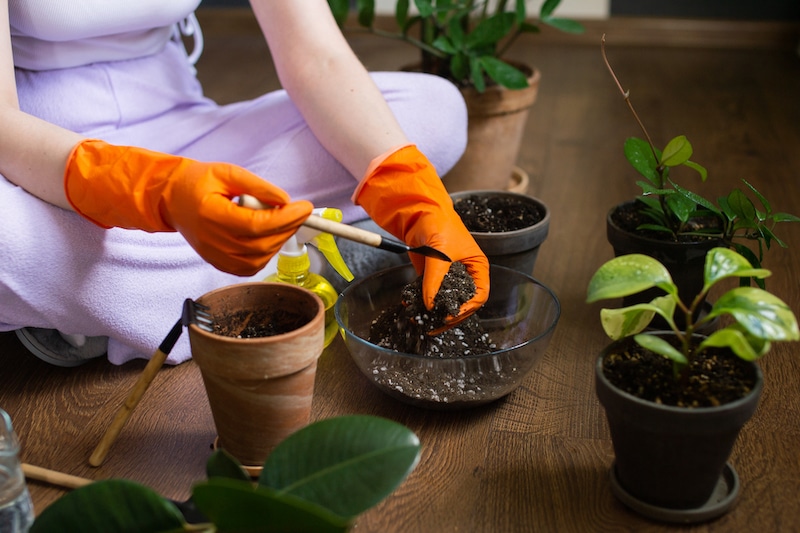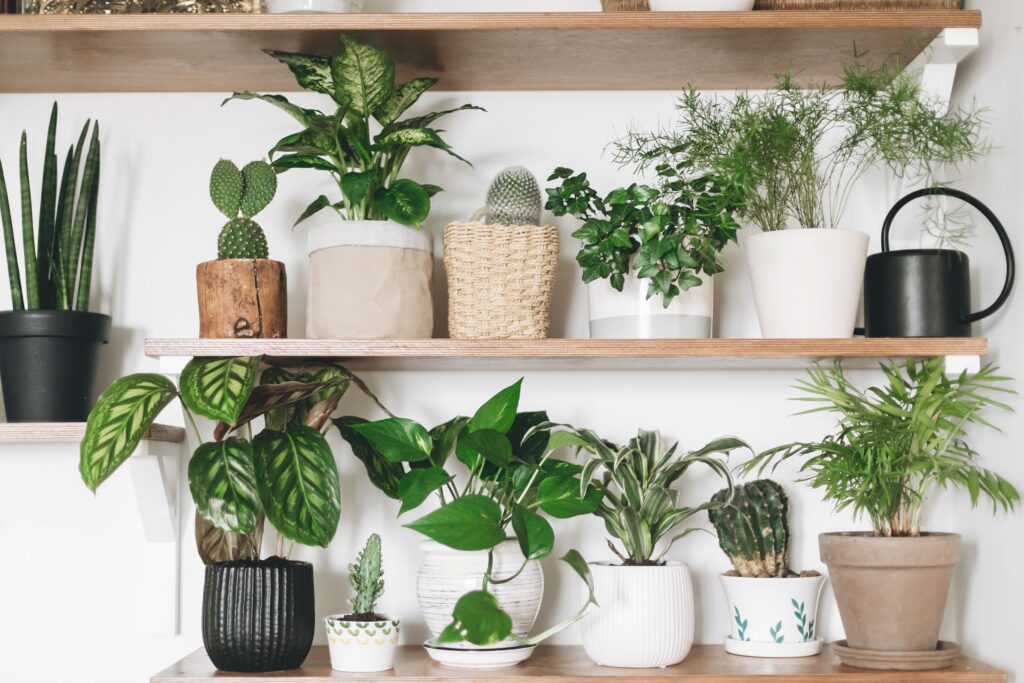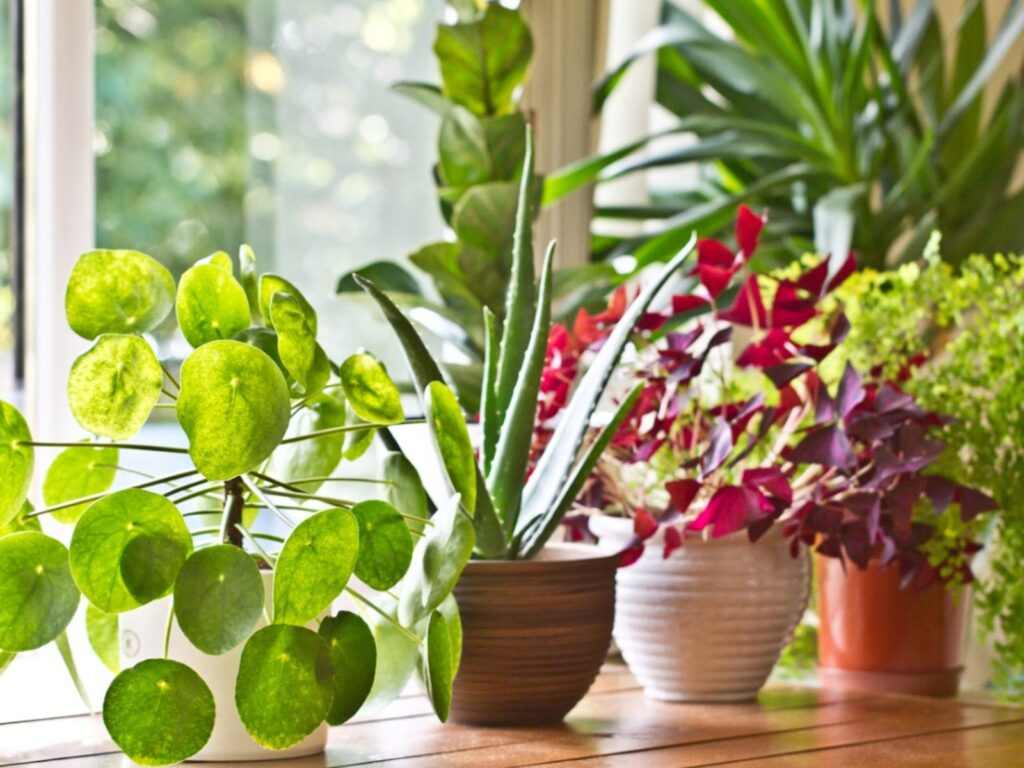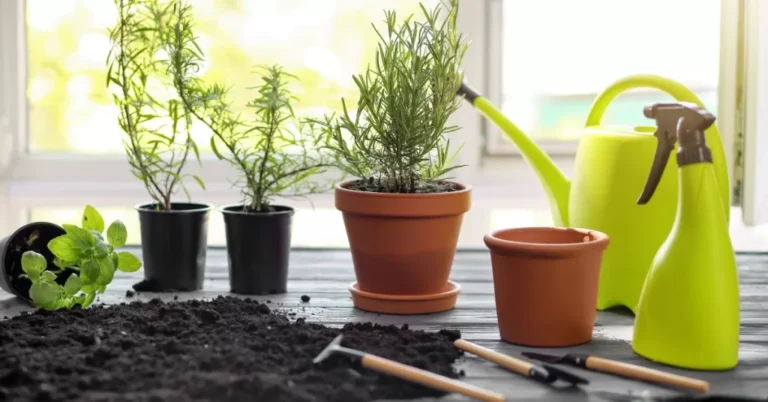Contents
Introduction
So you’ve decided to dive into the world of apartment gardening! Whether you’ve got a green thumb or are just starting out, one of the most important choices you’ll make is picking the right potting mix. It might sound like a minor detail, but trust me, it’s crucial for the success of your indoor garden.
Imagine your plants are like us humans—they need the right environment to thrive. For us, it’s a comfortable home, good food, and plenty of fresh air. For plants, it’s all about having the right mix of soil, nutrients, and drainage. And that’s where potting mix comes into play. Unlike garden soil, which can be heavy and clumpy, potting mix is specially designed to be light, well-draining, and full of the nutrients your plants need.
Now, why is this so important for apartment gardeners? Well, space is often limited in apartments, so every plant counts. A good potting mix helps your plants get the right balance of moisture and air, prevents root rot, and ensures they get the nutrients they need to grow strong and healthy. Plus, with the right mix, you’ll find it easier to manage your watering schedule and keep your plants looking their best.
In this guide, we’re going to break down the different types of potting mixes, what makes them great for apartment gardening, and how to choose the perfect one for your plants. We’ll also share some DIY recipes if you’re into making your own mix. By the end of this, you’ll be equipped with all the knowledge you need to keep your indoor garden flourishing.
So grab a cup of coffee, get comfy, and let’s dive into the world of potting mixes. Your plants will thank you for it!
Understanding Potting Mixes
Alright, let’s get into the nitty-gritty of what makes a potting mix tick. If you’re new to the world of apartment gardening, you might be wondering: what exactly is a potting mix, and why should I care? Let’s break it down in simple terms.

What is a Potting Mix?
Think of potting mix as your plant’s personal growth booster. Unlike regular garden soil, which can be heavy and compact, potting mix is designed to be light and airy. This is super important for indoor plants because it helps with drainage and ensures that roots don’t sit in soggy soil, which can lead to root rot.
Potting mix is a special blend of ingredients that gives your plants the right environment to thrive. It’s basically a pre-made recipe that combines several key components to create the perfect home for your plants’ roots. And just like any good recipe, the ingredients are crucial.
Key Components of Potting Mixes
Let’s dive into what’s inside that bag of potting mix you might be eyeing:
- Organic Matter: This includes things like compost, peat moss, and coconut coir. These ingredients are great at holding moisture and nutrients while keeping the mix light and fluffy. Think of them as the nutritious snacks that keep your plants happy and healthy.
- Inorganic Matter: Ingredients like perlite, vermiculite, and sand fall into this category. They help with drainage and aeration, which means your plants’ roots get the air they need to grow strong. If organic matter is the snack, inorganic matter is like the good-quality air filter for your plants.
- Nutrients: Potting mixes often come with added fertilizers that give your plants a head start. These nutrients are essential for plant growth, helping them develop strong stems, vibrant leaves, and plenty of flowers or fruit.
So, why is all this important? Well, when you choose the right potting mix, you’re giving your plants the best chance to grow big and healthy. A good mix helps your plants absorb water and nutrients efficiently, prevents problems like root rot, and makes it easier for you to manage your garden.
In the next sections, we’ll look at what factors you should consider when choosing a potting mix and explore some of the top options available. But for now, just know that understanding these basics will help you make better choices for your indoor garden.
Factors to Consider When Choosing a Potting Mix
Alright, you’re ready to dive into the world of potting mixes, but how do you pick the right one? With so many options out there, it can be a bit overwhelming. Don’t worry—we’ve got you covered. Here are the key things you should think about to make sure you choose the perfect potting mix for your apartment garden.
Type of Plants
First things first, what kind of plants are you growing? Different plants have different needs, so your potting mix should match those needs.

- Herbs and Vegetables: If you’re growing herbs like basil or veggies like tomatoes, you’ll want a mix that has good drainage but also holds onto some moisture and nutrients. Look for mixes labeled for vegetables or herbs—they usually have the right balance of these elements.
- Flowers and Ornamentals: For beautiful flowers and ornamental plants, you need a mix that supports healthy root growth and keeps the plant’s soil moist without becoming soggy. A mix that offers good aeration and retains moisture is ideal.
- Succulents and Cacti: These guys are a bit different—they thrive in dry conditions. For succulents and cacti, you’ll need a mix that drains well and doesn’t retain too much water. Look for a mix specifically designed for these types of plants, or you can create a custom blend with extra sand or perlite.
Container Size and Type
Your pot’s size and type also play a big role in what kind of potting mix you should use.
- Small Containers: If you’re working with small pots, you need a mix that won’t compact too much and can still provide good drainage. A lighter mix will help prevent waterlogging and root issues.
- Large Containers: For larger pots, stability is key. You’ll want a mix that maintains moisture but doesn’t get too heavy. A well-balanced mix that holds moisture without becoming waterlogged is best.
Climate and Environmental Factors
Your apartment’s environment can affect how often you need to water and how well your plants do.

- Indoor vs. Outdoor Conditions: Even though your garden is inside, factors like temperature and humidity still come into play. If your apartment is dry, you might need a mix that retains more moisture. Conversely, if it’s humid, a mix with good drainage might be more appropriate.
- Seasonal Variations: During different seasons, your plants might need different care. In winter, when indoor heating can dry out the air, a mix that retains moisture could be beneficial. In warmer months, you might need a mix that helps with quicker drainage.
Choosing the right potting mix isn’t just about picking a bag off the shelf—it’s about matching the mix to your plants’ needs, the size of your containers, and your apartment’s environment. Think of it as creating the perfect home for your plants, ensuring they have everything they need to grow and thrive.
Next up, we’ll dive into some top potting mix recommendations that will make your choices even easier. Stay tuned!
Top Potting Mixes for Apartment Gardeners
Now that you know what to look for in a potting mix, let’s dive into some of the best options available. Whether you’re buying ready-made mixes or considering a DIY approach, here are some top choices that will keep your indoor garden thriving.
Commercially Available Mixes
If you prefer grabbing a pre-made mix from the store, there are plenty of great options that cater to different types of plants. Here’s a roundup of some popular and highly recommended mixes:
- General-Purpose Mixes: These are your all-around, do-it-yourself garden heroes. They’re balanced and versatile, making them a good choice for a variety of plants.
- Miracle-Gro Potting Mix: Known for its reliability and balanced formula, Miracle-Gro is a favorite among many gardeners. It provides good drainage and comes with added nutrients to help plants grow.
- Black Gold All Purpose Potting Soil: Another great option, Black Gold offers excellent drainage and nutrient content. It’s ideal for a wide range of indoor plants, from herbs to houseplants.
- Specialty Mixes: If you’re growing something specific, like succulents or orchids, you’ll want a mix designed just for them.
- Herb and Vegetable Mixes: These mixes are formulated to provide the right balance of nutrients and moisture for your edible plants.
- FoxFarm Ocean Forest: Rich and organic, this mix is perfect for vegetables and herbs. It’s packed with nutrients and has great moisture retention.
- Espoma Organic Potting Mix: This mix is another excellent choice for veggies and herbs, featuring organic ingredients and a well-balanced nutrient profile.
- Cactus and Succulent Mixes: Succulents and cacti need a mix that drains quickly and doesn’t hold too much moisture.
- Schultz Cactus Mix: Designed for optimal drainage, Schultz’s mix helps prevent root rot in your cacti and succulents.
- Bonsai Jack Cactus Mix: Another excellent choice, this mix has extra perlite for superb drainage and is perfect for dry-loving plants.
- Orchid Mixes: Orchids have unique needs, requiring a mix that offers high aeration and drainage.
- Better-Gro Orchid Mix: This mix includes bark and charcoal to provide the right environment for orchids’ roots.
- Repotme Orchid Mix: With a blend of fir bark and other ingredients, this mix supports healthy growth for various orchid types.
- Herb and Vegetable Mixes: These mixes are formulated to provide the right balance of nutrients and moisture for your edible plants.
DIY Potting Mix Recipes
If you’re a hands-on gardener, you might enjoy creating your own potting mix. It’s a great way to customize the mix to fit your specific plants and preferences. Here are some easy recipes to get you started:
- Basic Recipe: A simple blend that works for many plants.
- Components: Mix together equal parts of peat moss, perlite, and compost.
- Instructions: Combine these ingredients thoroughly in a large container. This mix provides a good balance of moisture retention and drainage.
- Customized Mixes: Tailor your mix to meet the needs of specific plants.
- For Herbs and Vegetables: Add worm castings and bone meal to your basic mix for extra nutrients.
- For Succulents and Cacti: Blend in sand and pumice to increase drainage and reduce moisture retention.
- For Orchids: Mix in pine bark and charcoal for the aeration and drainage orchids love.
Choosing the right potting mix can make all the difference in your apartment garden’s success. Whether you go with a commercial mix or create your own, picking the right ingredients will help your plants grow strong and healthy. In the next section, we’ll cover some essential tips for keeping your potting mix in top shape. Stay tuned!
Tips for Maintaining Potting Mix Health
You’ve picked the perfect potting mix, and your plants are starting to grow, but how do you keep that mix in top shape? Maintaining your potting mix is key to keeping your indoor garden healthy and thriving. Let’s go over some essential tips to help you get the most out of your potting mix.
Proper Watering Techniques
Watering might seem straightforward, but getting it right is crucial for maintaining the health of your potting mix and plants.
- Avoiding Overwatering: Too much water can be just as harmful as too little. Overwatering can lead to soggy soil and root rot. To avoid this, make sure you’re not watering too frequently. Check the top inch of the soil—if it’s dry, it’s time to water. If it’s still moist, hold off for a bit.
- Watering Frequency: Different plants have different needs. Herbs and vegetables might need more frequent watering, while succulents and cacti need less. Pay attention to your plants and adjust your watering schedule based on their needs and your apartment’s humidity levels.
Replenishing Nutrients
Plants use up the nutrients in your potting mix over time, so it’s important to replenish them to keep your garden healthy.
- Fertilizing: Adding fertilizers helps replenish the nutrients your plants need. Liquid fertilizers are great for quick nutrient boosts, while slow-release fertilizers provide a steady supply of nutrients over time. Follow the instructions on the fertilizer package for the best results.
- Organic Amendments: If you prefer natural options, consider adding organic amendments like compost or worm castings. These additions not only provide nutrients but also improve the soil structure, helping with moisture retention and aeration.
Refreshing and Replacing Potting Mix
Even the best potting mixes can wear out over time. Here’s how to keep your mix fresh and effective.
- When to Refresh: Look out for signs that your potting mix needs a refresh. If it’s compacted, has an unpleasant smell, or isn’t holding moisture well, it might be time to refresh it. Older mixes can become depleted of nutrients and may not provide the best environment for your plants.
- How to Refresh: You can refresh your mix by mixing in new components like compost or perlite. If the mix is too far gone, you might need to replace it entirely. Gently remove the old mix from your pots, add fresh mix, and replant your plants. This is also a good opportunity to check for any root issues and trim dead or damaged roots.
Maintaining the health of your potting mix ensures that your plants get the best possible start and continue to thrive. With proper watering, regular nutrient replenishment, and timely refreshes, you’ll keep your indoor garden in top shape. Next up, we’ll discuss some common mistakes to avoid and how to keep your gardening efforts on track. Keep reading!
Common Mistakes and How to Avoid Them
Even seasoned gardeners can make a few missteps when it comes to potting mixes. If you’re new to indoor gardening, avoiding these common mistakes will help you keep your plants happy and healthy. Let’s go over some pitfalls and how you can steer clear of them.
Using Garden Soil Instead of Potting Mix
One of the biggest mistakes you can make is using garden soil in your indoor pots. While it might seem like a good idea to use what you have on hand, garden soil is usually too heavy and compact for container gardening.
- Issues: Garden soil doesn’t drain well, which can lead to waterlogged roots and root rot. It might also carry pests and diseases that could harm your indoor plants.
- Solution: Always use a potting mix specifically designed for containers. Potting mixes are lighter, drain better, and are often sterile, reducing the risk of pests and diseases. If you’re unsure, look for a mix labeled “potting” rather than “garden” soil.
Ignoring Plant-Specific Needs
Different plants have different requirements when it comes to soil. Ignoring these specific needs can lead to poor growth and even plant death.
- Consequences: Using a one-size-fits-all mix for every type of plant might not meet the specific needs of herbs, succulents, or orchids. This can result in nutrient deficiencies, overwatering, or poor root development.
- Solution: Choose a potting mix tailored to the type of plant you’re growing. For example, succulents need a mix with excellent drainage, while vegetables might require a nutrient-rich blend. Always check the plant’s needs and match them with the right mix.
Neglecting Proper Drainage
Proper drainage is essential for healthy plant roots. If your pots don’t drain well, you’re likely to encounter problems.
- Issues: Poor drainage can cause excess moisture to build up, leading to root rot and fungal issues. It can also make it difficult for roots to get the oxygen they need.
- Solution: Ensure your pots have drainage holes at the bottom. If you’re using pots without holes, consider adding a layer of gravel or stones at the bottom to improve drainage. Also, use a potting mix that facilitates good water flow.
Avoiding these common mistakes will set you up for gardening success. By using the right potting mix, paying attention to plant-specific needs, and ensuring proper drainage, you’ll keep your indoor garden thriving. Up next, we’ll wrap things up with a quick recap and offer some final tips to help you on your gardening journey. Keep going!
Conclusion
You’ve made it to the end of our guide on choosing the best potting mixes for apartment gardeners! By now, you should have a solid understanding of what potting mixes are, why they’re crucial, and how to select and maintain the right one for your indoor garden. Let’s do a quick recap and see what’s next on your gardening journey.
Recap of Key Points
Choosing the right potting mix is a game-changer for your indoor garden. Here’s a quick summary of what you’ve learned:
- Understanding Potting Mixes: We covered the basics of potting mixes, including their key components like organic and inorganic matter, and why they’re different from regular garden soil.
- Factors to Consider: We discussed how plant type, container size, and environmental factors play a role in selecting the perfect mix for your needs.
- Top Potting Mixes: You got a rundown of some of the best commercially available mixes and DIY recipes, tailored for everything from herbs to succulents.
- Maintaining Potting Mix Health: We shared tips on proper watering, replenishing nutrients, and refreshing your mix to keep it in tip-top shape.
- Common Mistakes: You learned about common pitfalls like using garden soil and ignoring plant-specific needs, along with how to avoid them.
Encouragement to Experiment
Now that you’re equipped with all this knowledge, don’t be afraid to experiment! Gardening is as much about trying new things as it is about following guidelines. Feel free to test different mixes and techniques to see what works best for your plants and your space. Remember, every plant and every garden is unique, so what works for one might not work for another.
Call to Action
We’d love to hear from you! Share your experiences with potting mixes and any tips you’ve discovered along the way in the comments. Your insights could help fellow apartment gardeners find the perfect mix for their own green spaces.
Further Reading and Resources
If you’re hungry for more gardening knowledge, check out our other guides and resources. From detailed plant care tips to advanced gardening techniques, there’s plenty more to explore to make your indoor garden the best it can be.
Thank you for joining us on this gardening journey. Happy planting, and here’s to a lush and vibrant indoor garden!



